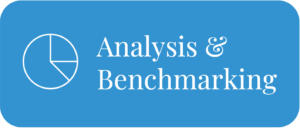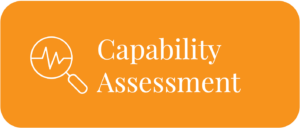Preparing your organisation for 2026 after a structurally different 2025
If your procurement team walks into January 2026 with the same skillset they had twelve months ago, you have a strategic liability that will compound with every passing quarter.
Here’s the paradox:
Your Chief Procurement Officer still holds the same title.
Your category managers are managing the same categories.
Yet the gap between what those documents, like a position description, define and what excellence requires has never been wider.
2025 reset the skills equation.
AI transformed workflows. Data became the determinant of competitive advantage. Category managers who once managed supplier relationships now need to articulate cash conversion impact to CFOs.
The question facing every CPO: do you have diagnostic precision about where your organisation stands and a plan to close the gaps before they become critical vulnerabilities?
We believe the real competitive advantage in 2026 isn’t having better skills, it’s having diagnostic precision about which skills, in which roles, by when. Vague awareness that “things changed” is worthless. Specific knowledge of your capability gaps and their closure paths is strategic currency.
So this blog doesn’t give you a transformation checklist.
It gives you a thinking framework (how to diagnose gaps systematically), a concrete exemplar (what elevated execution actually looks like in category management), and a systems question (can your operating model attract and keep people who think this way?).
Strategic Procurement Skills Planning for 2026
The question isn’t whether your procurement team needs new capabilities. They do.
The question is whether you have diagnostic precision to move from vague unease to targeted action.
Most organisations know change happened.
They sense capability gaps.
But they lack the framework to answer the hard questions with data-driven confidence:
- Which roles must become AI-proficient? What does that mean in measurable, certifiable terms, and is your data infrastructure ready to make AI a strategic advantage rather than expensive noise?
- Where are capability gaps most acute? Are you weakest in soft skills, analytical capabilities, financial acumen, or core procurement expertise, and what’s the closure path for each?
- Can your category managers operate as micro-CEOs? Do they articulate cash conversion impact, should-cost positions, and risk-adjusted value in language CFOs recognise?
Without answers, you’re navigating 2026 with outdated assumptions.
Capability gaps don’t close themselves. They compound. What feels like a 10% deficit in Q1 becomes a 40% strategic disadvantage by year-end when your competitors are learning faster than you’re developing.
Procurement Skills Assessment: Identifying Your Capability Gaps
Skills gap analysis fails when it’s too generic. “Better analytical skills” doesn’t drive action. You need diagnostic precision across four integrated dimensions, and 2025’s AI transformation fundamentally changed what excellence looks like in each.
1. Core procurement expertise
Negotiation in the age of transparency. Supplier relationship building when transactional work is automated. Category strategy when everyone accesses the same market data. The fundamentals didn’t disappear, they elevated.
2. Soft skills
Data storytelling that translates AI insights into C-suite action. Stakeholder influence when you’re no longer the information gatekeeper. Change leadership as AI reshapes workflows. These aren’t “soft”, they’re the hardest capabilities to develop and the most valuable in 2026.
3. Analytical capabilities
AI-proficient professionals demonstrate three behaviours: instinctive tool orchestration (using AI for spend analysis, contract review, risk monitoring as workflow, not novelty), critical consumption (interrogating outputs and knowing when to override), and continuous adaptation (learning new platforms with minimal friction). But AI capability means nothing without governed data, spend taxonomy, contract structure, supplier performance quality determines whether AI creates insight or noise.
4. Financial and business acumen
Cost modelling sophistication for should-cost positions. Risk sensing that connects procurement to enterprise exposure. Total value articulation beyond price reduction. The ability to speak in cash flow language, not just procurement savings.
These aren’t separate tracks. Your best professionals in 2026 demonstrate strength across all four.
Category Management Excellence: The Micro-CEO Standard
The role of procurement category manager underwent fundamental redefinition in 2025.
The job description might still emphasise sourcing events, supplier management, and cost savings. But the execution standard elevated dramatically.
Three CFO-grade metrics that separate administrators from micro-CEOs
The category managers delivering strategic value in 2026 can articulate their impact in terms CFOs recognise:
1. Cash conversion impact
Beyond cost savings, they understand how their category decisions affect working capital. Payment term negotiations, inventory optimisation through supplier partnerships, and consignment arrangements that improve Days Payable Outstanding. They speak in cash flow language, not just procurement savings.
Example metric: “Renegotiated payment terms across top 10 suppliers improved DPO by 8 days, unlocking $12M in working capital.”
2. Should-cost delta versus market
They don’t just benchmark against other buyers, they understand supplier cost structures well enough to know when pricing reflects market dynamics versus inefficiency or excess margin. They build should-cost models that inform negotiation positions with precision.
Example metric: “Should-cost analysis identified 18% cost reduction opportunity in packaging category; realised 14% through supplier collaboration on material substitution.”
3. Risk-adjusted total value
They quantify trade-offs across cost, quality, innovation, supply continuity, and ESG performance. They can explain to the CFO why paying 7% more for a supplier delivers superior total value through reduced defect rates, faster innovation cycles, or eliminated supply chain disruption risk.
Example metric: “Premium supplier selection in critical components delivered 4.2% cost premium but eliminated $8M in quality failure costs and reduced new product development cycle by 6 weeks.”
The capability gap: coaching, not intelligence
Most category managers can operate at this level. What’s missing is coaching, exposure, and organisational permission to think strategically.
Are your category managers spending time with CFOs, business unit leaders, and cross-functional strategy teams, or are they buried in RFP administration because that’s what gets measured?
The micro-CEO mindset requires systems thinking, financial fluency, and stakeholder influence that develop through exposure and coaching, not job descriptions.
Procurement Talent Management: Building a Future-Ready Operating Model
Developing strategic category managers requires attracting and retaining talent who can operate at that level. Which means your operating model needs to match how high-performing professionals expect to work in 2026.
You’re not losing high performers to competitors offering 15% more salary. You’re losing them to organisations that give them CFO exposure, fast feedback, and transparent career progression, things money can’t retrospectively buy.
The procurement functions winning the talent competition redesigned around three principles:
- Clear outcomes over task lists: People want to know how their work connects to enterprise value, not just that they need to complete three RFPs this quarter. Define success by impact, not activity.
- Fast feedback loops over annual reviews: Build frequent check-ins, project retrospectives, and ongoing coaching into your operating rhythm. High performers optimise quickly, but only if they get signal on what’s working.
- Transparent career paths over ambiguity: Make the journey visible: required capabilities, typical timelines, development opportunities, and success criteria. Ambitious professionals will navigate complexity, they won’t tolerate opacity.
These aren’t generational preferences, they’re operating model improvements that make organisations more effective regardless of workforce composition.
If your best professionals leave after two years, the problem likely isn’t their commitment, it’s your environment.
Ready to diagnose where your procurement organisation stands?
Book a call with a Capability Specialist.
At Comprara, we help senior procurement leaders move from sensing capability gaps to closing them, with diagnostic precision, targeted development programs, and strategic clarity.
Comprara specialises in strategic procurement management consulting, helping organisations build procurement functions that deliver sustained competitive advantage.
Learn more at skillsgapanalysis.com






